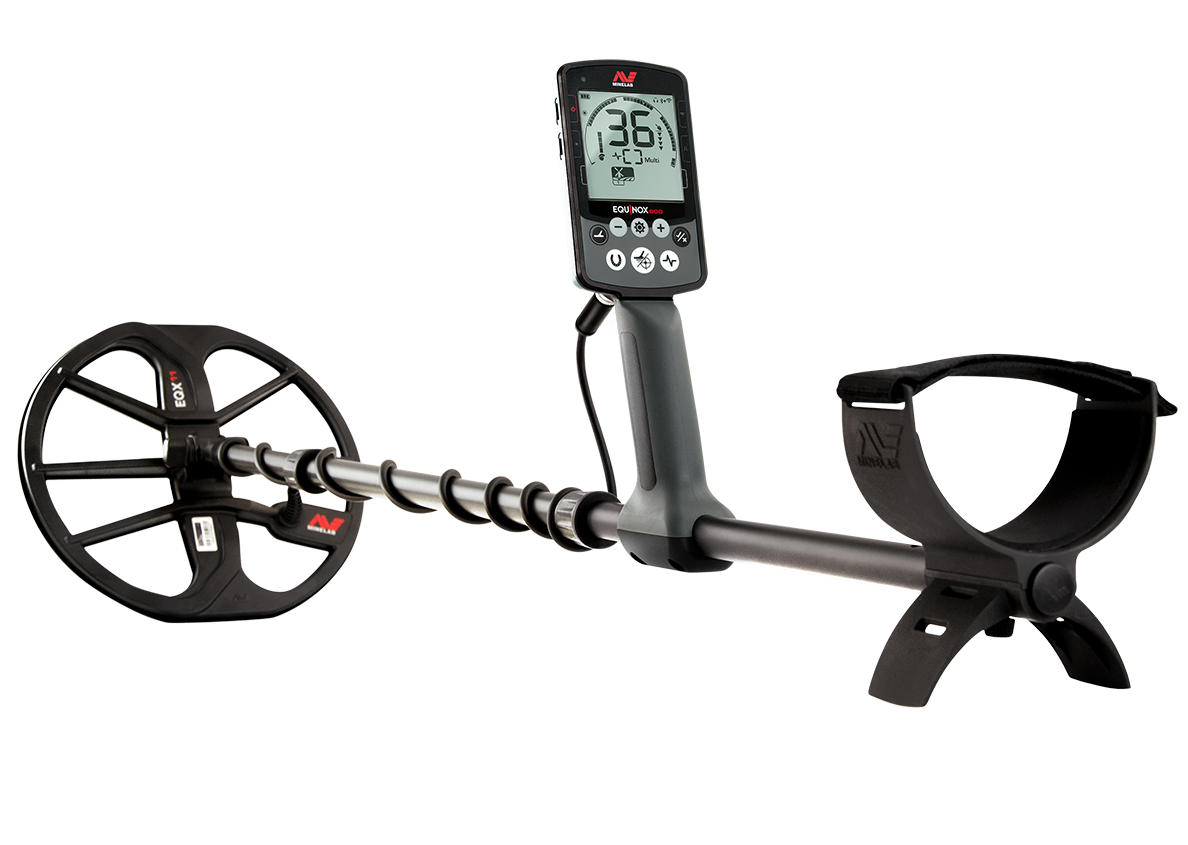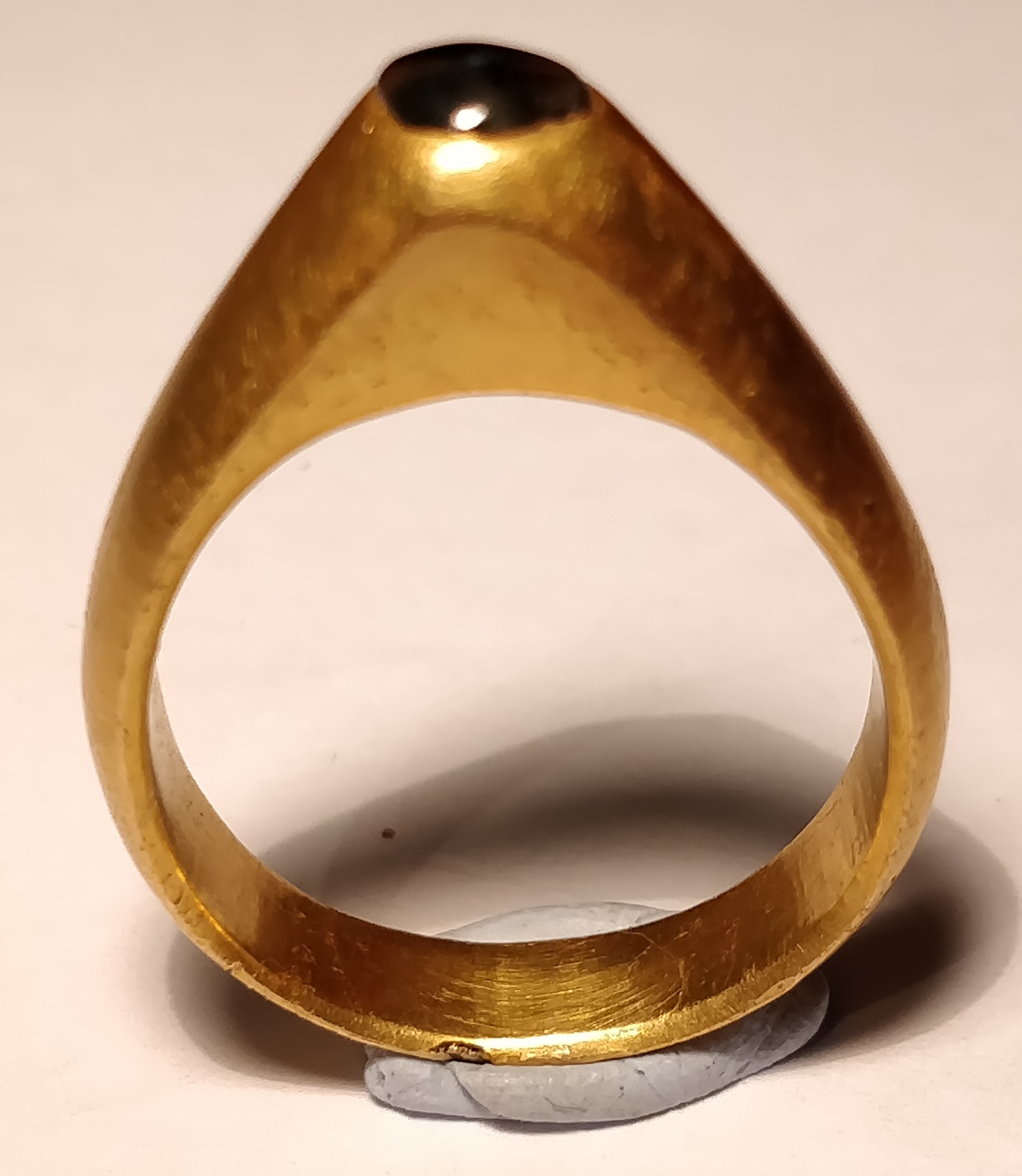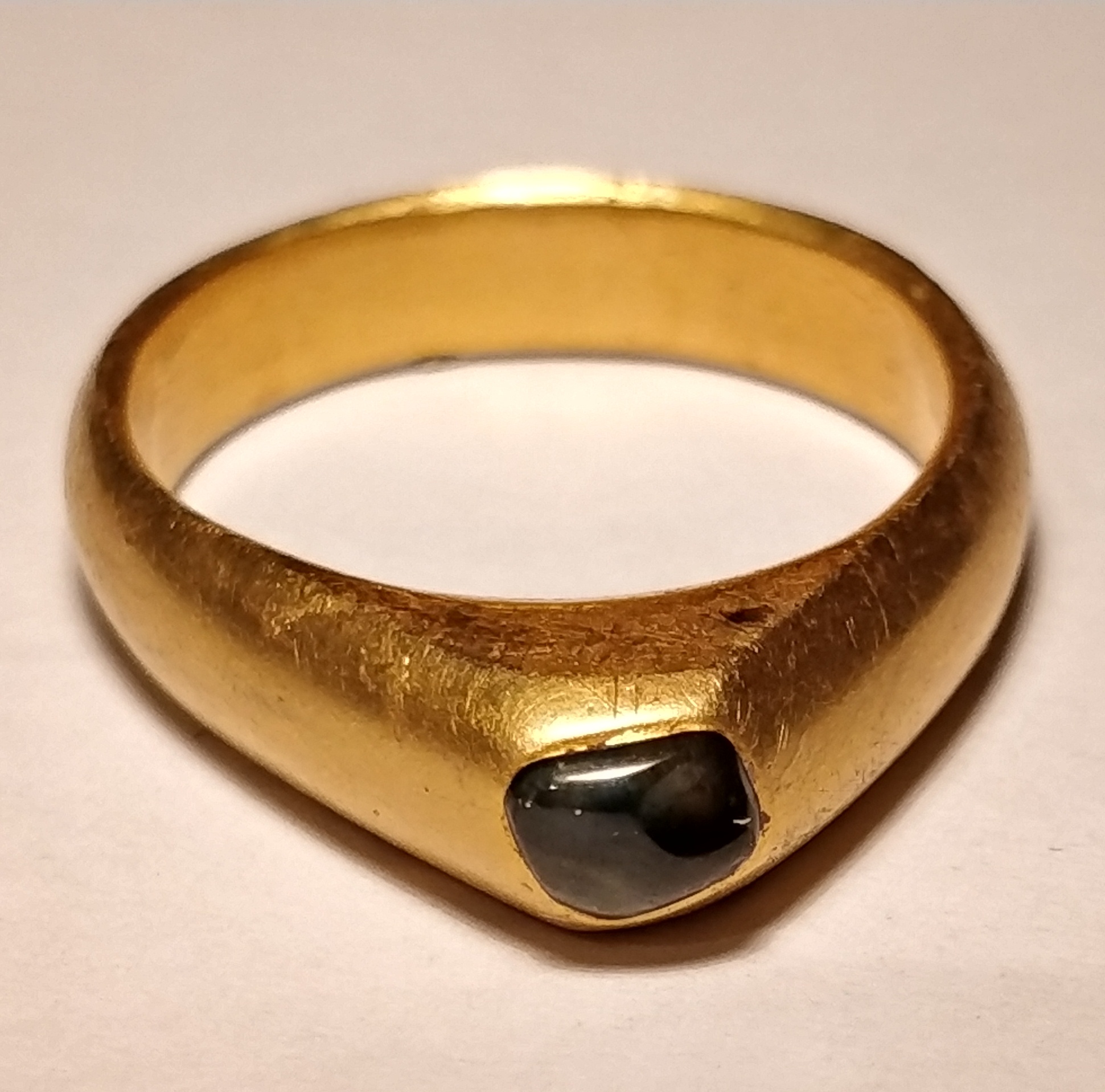NOX-TASTIC 800 year old gold Bishop’s ring found in Scotland I’m still shaking as I write this and all I can say is thank you Minelab for producing such a brilliant machine as the EQUINOX. I have used another lightweight brand for a long time and the EQUINOX is the first Minelab I have been tempted to try, mainly due to it being lightweight, fast and deep, but probably most of all because Derek and Sharon McLennan were the development testers and Minelab Detexperts – these guys know their detecting, are straight talking and honest. Man, am I so glad I took the leap of faith. I live and detect in wild, wet and windy Scotland and we have to work really hard for any finds we make, sometime in the worst possible conditions. Well today, my dreams came true and I found a piece of history that just blew my mind. It was not such a bad day, relatively dry, but with a cold wind blowing across the fields. I entered the field just happy to be out and maintaining my fitness. I am a cancer survivor and use a voice prosthesis to communicate, which can be frustrating at times at club digs. Metal detecting inspires me to keep going, I lose myself in my own world once I am on the field and swinging away and for those few hours I forget everything that life has thrown at me. On this day, I was detecting in a stubble field in Fife, Scotland and after a couple of hours, I had a pouch full of the usual detecting finds, a mixture of coins, scrap and broken artefacts. Running in Field 2, two tones, with my recovery speed at 5 and sensitivity at 18, I got a solid two way signal with the TID number reading 26. Now, this would normally indicate a possible large silver milled coin, so I thrust the spade into the ground and popped out the clod hoping to see the glint of silver. BOOM, was I surprised at what fell out of the clod. There it was staring up at me, shining its beauty into the world once more after nearly 800 years – a pure gold and sapphire medieval stirrup ring. After the initial shock of finding such a beautiful artefact, I hurriedly took some photographs and sent the images to Derek and Sharon to fully identify and confirm it was as old as I thought it was. Both of them came back to me almost immediately and in between the congratulations, they confirmed the age of the ring and provided a few more details. They agreed it was a stirrup ring and dated to between the late 12th and 14th centuries. These rings get their name from their shape, as it is similar to that of a horse’s stirrup. They were a popular style for Bishops and clergymen to wear, but laymen could also wear them. However, the rings worn by the clergy were always larger and heavier than those that laymen wore, due to the fact that the clergy’s rings were generally worn over gloves. My ring with its large diameter size and weighing 10 grams would have definitely belonged to and been worn by a powerful clergyman most probably in the early to mid-13th century. It is set with a stunning blue sapphire cabochon and these gemstones were associated with the Virgin Mary. According to the Venerable Bede, an English Benedictine monk and one of the greatest teachers and writers of the Early Middle Ages, the sapphire signified those who were inspired by faith and who could rise to celestial heights. Now, I don’t know about all that, but one things for sure, it definitely made me fly high as the clouds! What a find, what an EQUINOX experience and definitely my best to date. The ring has been reported to the Treasure Trove Unit in Edinburgh and will shortly start its journey through the system. It will undoubtedly be claimed by the Crown as treasure and I will be happy in the knowledge that it will end up in a museum on display once again for all the public to see – another historic artefact saved from the soil by the mighty EQUINOX!
Tommy - Scothland, UK






















